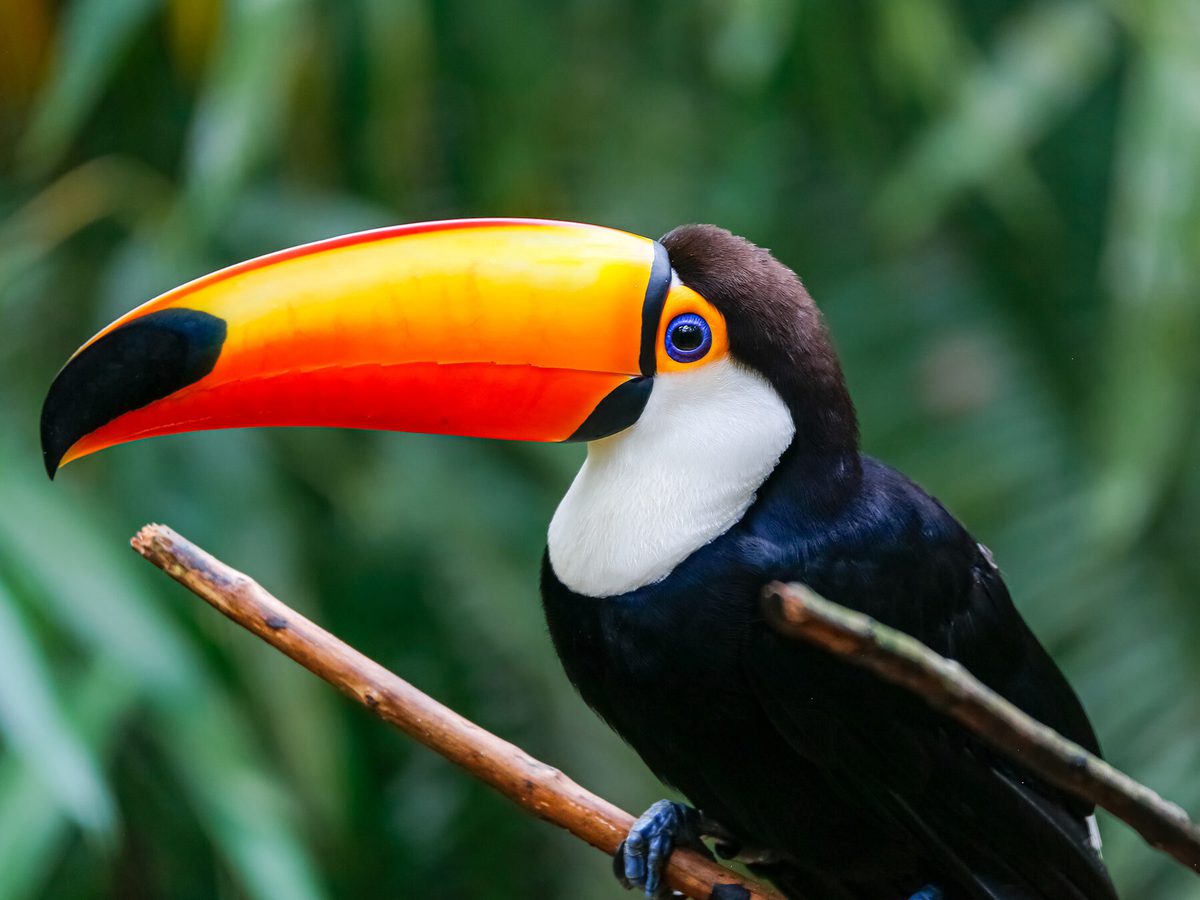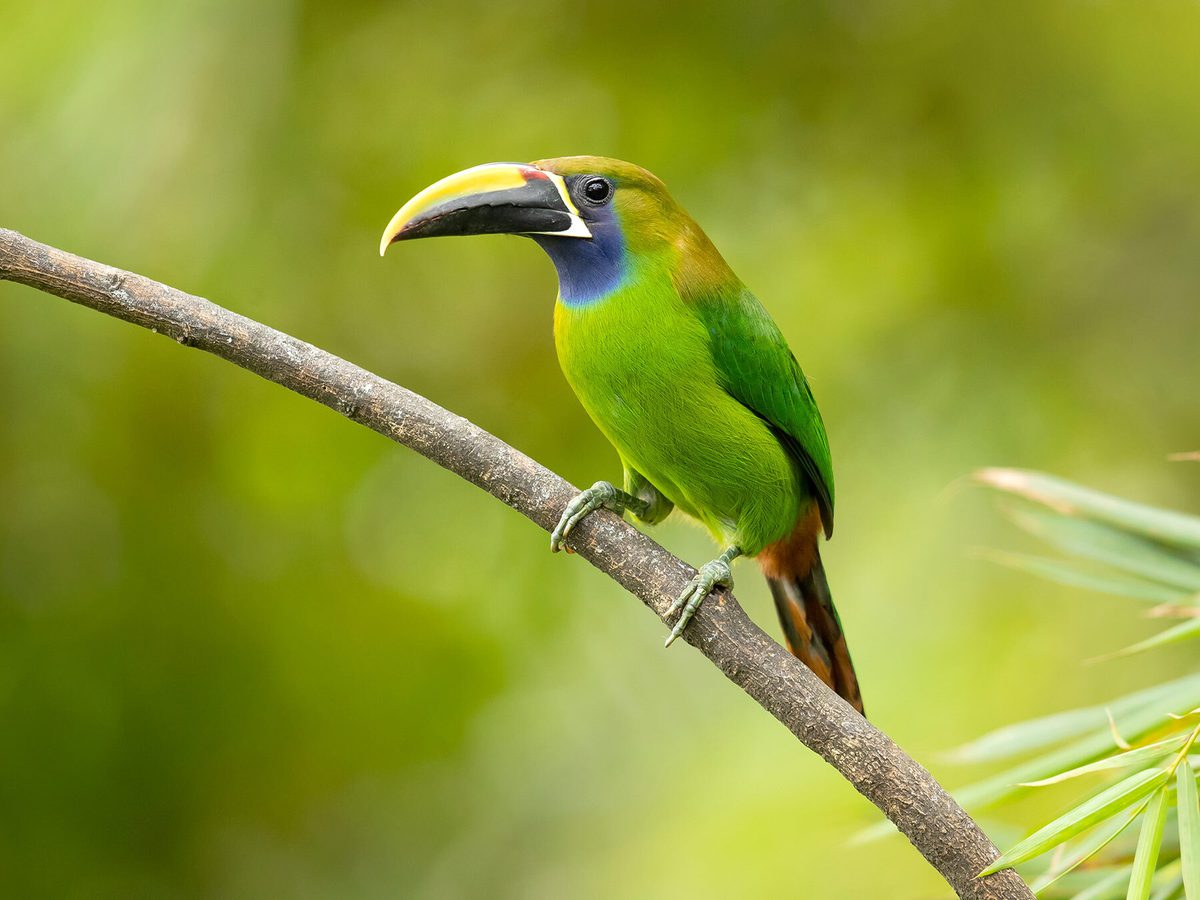Toucans and their smaller-billed cousins, the toucanets and araçaris are all part of the Ramphastidae family. The most well-known toucan is probably the Toco toucan. These tropical birds live exclusively in Central and South America. Everyone is likely familiar with the toucan’s enlarged bill, but here we’re going to address; how long do toucans live?
Detailed studies on toucan longevity are lacking, but most sources suggest that toucans live for an average of 12 to 20 years in the wild. In captivity, toucans can live until they’re 25. One Toco toucan allegedly lived until it was 26, which seems possible.
While this is a much shorter lifespan than the parrots, which inhabit much of the same rainforests as toucans, they are still relatively long-lived for birds of their size. Toucans also have a reasonably long life cycle as they don’t obtain full sexual maturity until they’re around 3 to 4 years old.
Read on to learn more about the lifespans of these beautiful birds!

Toucans can live up to 20 years in the wild. There are claims that a Toco Toucan (pictured) lived until the ripe old age of 26!
What is the typical lifespan of toucans?
Formal studies into toucan lifespan are lacking, but the typical lifespan of a toucan is around 12 to 20 years.
This is true both in the wild and in captivity, though in captivity, toucans can live for slightly longer. The oldest toucan is alleged to be 26-years-old, which certainly seems achievable.
Smaller toucanets and araçaris tend to live for around 8 to 12 years. The Emerald toucanet, a popular pet, can live for 12 to 14 years in captivity.
How long do toucans live in the wild?
Wild toucans can live for up to 20 years. There is little solid evidence on how long other birds in the toucan family live (e.g. the toucanets and araçaris). 12 to 20 years is the best estimate we have.

A popular pet, the Emerald Toucanet, can live up to 14 years in captivity
How long do toucans live in captivity?
A well-looked-after Toco toucan can live for 20 years in captivity. Other birds from the toucan family are kept as pets, too - the Emerald toucanet typically lives for 12 to 14 years.
Pet toucans and toucanets are in high demand and are partly why natural populations are dwindling.
Many pet toucans die prematurely as their owners do not take sufficient specialist care of them. These are complex tropical birds, and they need to be fed a wide range of natural fruits and a specialised low-iron pellet.
Conservationists agree that more has to be done to limit the trade of toucans and other tropical birds as pets.
How do most toucans die?
In the wild, toucans face threats from predators on land and air. Eagles, hawks, owls, snakes, boas, jaguars and coati are some of the main threats to wild toucans.
Toucans also face threats from other toucans, which are known to kill and sometimes even eat nestlings. Nest parasites are also a significant risk to young birds.
In captivity, capillariasis is a significant cause of premature death in pet toucans. This is a type of parasitic infection that can cause hepatitis and blood poisoning. Hemochromatosis is another common affliction of pet toucans and affects how they store and process excess iron.

Keen-billed Toucan (Ramphastos sulfuratus)
What is the life cycle of a toucan?
Toucans live for around 12 to 20 years. Most toucan species lay about 2 to 4 eggs that are incubated for around 18 to 22 days. The hatchlings are entirely blind and naked. Baby toucans grow quickly but don’t fledge until approximately 40 to 60 days after hatching.
Once fledged, baby toucans stay within close care of their parents for another 2 to 3 months, and once they become independent, they can take 2 to 4 years to reach sexual maturity.
Toucans have a slow lifecycle, especially with regards to the juvenile stage, which lasts for much longer than similarly-sized birds. Many similar-sized birds reach sexual maturity in less than a year.

A Toco toucan eating bananas
What are the predators of toucans?
Toucans live in the forests and rainforests of Central and South America, which are full of predators. Owls, eagles, hawks, monkeys, coatis, snakes, lizards and even large mammals like jaguars eat toucans.
Toucans rarely visit the ground, but many snakes and mammals are excellent climbers and frequently ascend the canopy to hunt. Anacondas are one example of tree-climbing predators - these enormous carnivorous snakes can scale large trees with ease.
How old is the oldest toucan?
The oldest toucan is regularly cited to be a Toco toucan aged 26-years-old.
This certainly seems possible - there’s no reason not to believe it. However, it’s hard to find where this figure comes from!

A Keen-billed toucan flying through the rainforest
How long can toucans live without food?
Most birds need to eat daily if possible, and it’s likely that toucans are no different. Therefore, pet toucans should be fed every day. If they are not fed for around 24 hours, they may start displaying signs of lethargy.
How many toucans are left in the world?
Estimating the numbers of tropical Central and South American birds is notoriously difficult. However, some studies suggest that there are around 10,000 mature Toco toucans.
Eleven species from the Ramphastidae family (around 22%) are of direct conservation concern.
Some of these species, like the Yellow-browed toucanet, Plate-billed mountain toucan and White-throated toucan, have extremely limited ranges and tiny populations of just hundreds of birds.

Toco toucan perched on a branch
Do toucans live in the rainforest?
Most species of toucans prefer heavily forested environments and live in the dense canopies of Central and South America.
The Andigena genus, known as the mountain toucans, instead prefer higher altitudes across the Andes mountain range. Almost all toucans prefer human climates. Even the mountain toucans choose rainy, humid mountainside forests.
Toucans spend much of their lives in the canopy and rarely see the forest floor.
Do toucans live anywhere outside of South and Central America?
Toucans solely live in Central and South America.
Though some live as far north as Mexico, the highest concentrations of toucans are in the Amazon rainforest and Andes mountain range, particularly in Bolivia, Ecuador, Brazil, French Guiana, Guyana, Suriname, Peru and Venezuela. Toucanets and araçaris also solely live in South and Central America.
